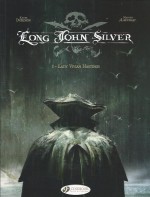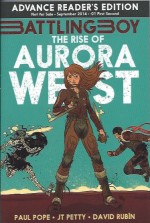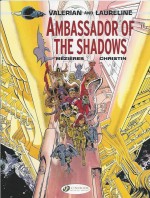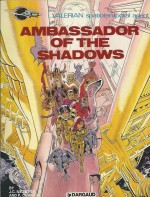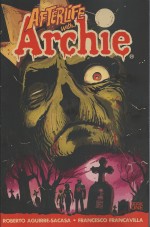
By Roberto Aguirre-Sacasa & Francesco Francavilla (Archie Comics)
ISBN: 978-1-61988-908-8
For nearly three quarters of a century Archie Andrews has epitomised good, safe, wholesome fun but the company has always been a deviously subversive one.
Family friendly iterations of superheroes, spooky chills, sci fi thrills and genre yarns have always been as much a part of the publisher’s varied portfolio as the romantic comedy capers of America’s clean-cut teens.
As you probably know by now, Archie has been around since 1941, spending most of those seventy-plus years chasing both the gloriously attainable Betty Cooper and wildly out-of-his-league debutante Veronica Lodge whilst best friend Jughead Jones alternately mocked and abetted his romantic endeavours and rival Reggie Mantle sought to scuttle his every move…
As crafted over the decades by a legion of writers and artists who’ve skilfully created the stories of teenage antics in and around the idyllic, utopian small town of Riverdale, these timeless tales of decent, upstanding, fun-loving kids have captivated successive generations of readers and entertained millions worldwide.
To keep all that accumulated attention riveted, the company has always looked to modern trends with which to expand upon their archetypal storytelling brief. In times past they have cross-fertilised their stable of stars through such unlikely team-ups as Archie Meets the Punisher, Archie Meets Glee, Archie Meets Vampirella or Archie Meets Kiss, whilst every type of fashion fad and youth culture sensation have invariably been accommodated into and explored within the pages of the regular titles.
In 2013 however the publishers took a bold and controversial step which paid huge dividends and created the biggest sales sensation in the company’s history.
It all began with a variant cover for Life With Archie #23 with illustrator Francesco Francavilla (Black Beetle, Zorro, Detective Comics, Captain America, Guardians of the Galaxy etc.) providing a moody spoof EC zombie graveyard scene. The variant was a sensation and cognitive cogs began to turn at the editorial offices…
When playwright, TV scripter and comicbook scribeRoberto Aguirre-Sacasa- whose many successes include Say You Love Satan, The Mystery Plays, 4: Marvel Knights Fantastic Four, Nightcrawler, Big Love, Sensational Spider-Man and Glee amongst others – got involved, it wasn’t long before a strange new enterprise was hatched.
Archie Comics is no stranger to horror titles. In the 1970s the company created the sub-imprint Red Circle for anthology terror tales during a supernatural boom time, before converting the line to superhero features as the decade progressed.
They even had a resident star-sorceress in Sabrina the Teenage Witch…
However, whereas that venture was decidedly a newsstand project, the proposed 21st century endeavour took the company into uncharted waters.
When it was released, the 5-issue miniseries Afterlife With Archie was available solely through Direct Sales outlets and the first title in the company’s history to carry a parental advisory; “Rated Teen +â€â€¦
The sinister saga was an outright sensation, selling hugely and garnering phenomenal critical approval from sources as far-ranging as Salon, Fangoria, The Plain Dealer and NPR (National Public Radio) as well as all the usual comics review pundits. Each issue spawned further printings in a desperate race to keep up with demand…
I’m not going to dwell much on the plot, but suffice to say it doesn’t stray far from the time-honoured scenaria of the best sort of teen horror movies – minus the gratuitous sex and oafish dependence on guns – but it does hone all those tropes and memes to a superbly gripping point by inflicting them upon a beloved and intimately understood cast we all think we know…
It all starts one dark and ghastly midnight with Jughead hammering on the door of Sabrina’s house. A hit-and-run driver has killed the boy’s beloved pet Hot Dog and he needs her to bring him back…
Even with the arcane aid of her spooky eldritch elders the attempt fails, compelling the deeply moved Sabrina to try a spell she knows she should not and engendering for herself a most hideous punishment…
The next day, school starts out pretty much normal. Everyone is hyped about the upcoming Halloween Dance, although loud, obnoxious Reggie seems painfully preoccupied with some guilty secret and Juggie is absent…
Concerned, Archie stops in for a visit to find his friend in a bad way. The always voracious boy is weak and sickly and his arm is infected from a nasty bite. Hot Dog just sits far back in the dark under the house, growling and snarling…
That night at the Gym the party is in full swing with kids tricked out in all their innocent gory glory. As usual tensions are high between Betty and Veronica, Dilton and Chuck are furiously debating the merits of their favourite scary movies and Devil-May-Care Reggie is still acting strange…
Things take a dark turn once Jughead appears. His costume is amazing, like a scarecrow Zombie King. As yet nobody knows he’s already eaten one of the chaperones…
The shocking scenes soon start, and lifelong friends begin falling thick and fast. With no choice but to accept the impossible, Archie leads the stunned, surviving students to the fortress-like Lodge Mansion, with the inexorably growing army of infectious dead closely following…
With danger all around, tensions lead to many revelations, as years of suppressed feelings are finally exposed like raw nerves.
Although safe within the palatial citadel, the grieving Andrews boy needs to get out and discover what has happened to his parents and the rest of the town. As yet nobody is aware that one of the cowering kids is already carrying the unstoppable necromantic taint of the grave…
Bold, uncompromising, suspenseful, powerfully shocking and genuinely scary, this yarn is also astoundingly moving (there’s nobody more sentimental than a comicbook geek, but I’m not ashamed to admit that twice during this tale I teared up and had to reach for the tissues) as it takes a cast as familiar as your own family and puts them through hell and into damnation.
Literally nobody is safe and by the end of this first story-arc – comics fan or not – you will be gobsmacked and hungry for more.
Happily there is a Book 2…
This grim graphic grimoire also comes with an unholy host of extras beginning with the story behind the phenomenon in ‘Covers from the Darkside’ which talks about the genesis of the project, a full gallery of the 22 covers, variants and subsequent reprint covers by Francavilla, Tin Seeley, Andrew Pepoy, Tito Peña, Robert Hack and Jason Millet and is rounded off with ‘Sketches of the Dead’ which reproduces Francavilla’s glorious pencil layouts for much of the entire five chapter saga…
Dark gripping fun and one of the very best comicbook horror stories ever created, Afterlife With Archie is a brilliant experience no Funnybook Fan or Fear Aficionado should miss.
© 2014 Archie Comic Publications, Inc. All rights reserved.



